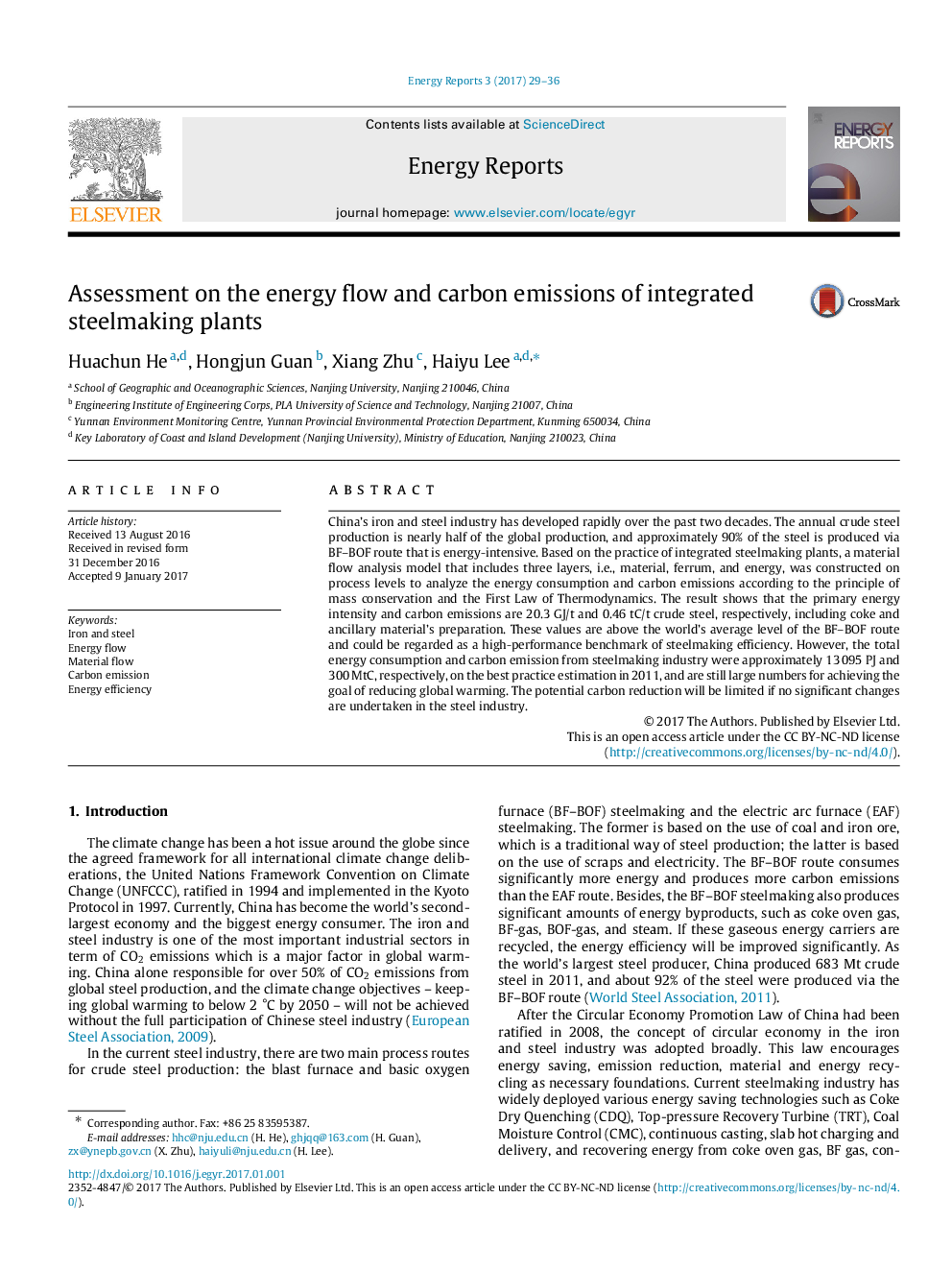| Article ID | Journal | Published Year | Pages | File Type |
|---|---|---|---|---|
| 5477390 | Energy Reports | 2017 | 8 Pages |
Abstract
China's iron and steel industry has developed rapidly over the past two decades. The annual crude steel production is nearly half of the global production, and approximately 90% of the steel is produced via BF-BOF route that is energy-intensive. Based on the practice of integrated steelmaking plants, a material flow analysis model that includes three layers, i.e., material, ferrum, and energy, was constructed on process levels to analyze the energy consumption and carbon emissions according to the principle of mass conservation and the First Law of Thermodynamics. The result shows that the primary energy intensity and carbon emissions are 20.3 GJ/t and 0.46 tC/t crude steel, respectively, including coke and ancillary material's preparation. These values are above the world's average level of the BF-BOF route and could be regarded as a high-performance benchmark of steelmaking efficiency. However, the total energy consumption and carbon emission from steelmaking industry were approximately 13Â 095 PJ and 300 MtC, respectively, on the best practice estimation in 2011, and are still large numbers for achieving the goal of reducing global warming. The potential carbon reduction will be limited if no significant changes are undertaken in the steel industry.
Related Topics
Physical Sciences and Engineering
Energy
Energy Engineering and Power Technology
Authors
Huachun He, Hongjun Guan, Xiang Zhu, Haiyu Lee,
